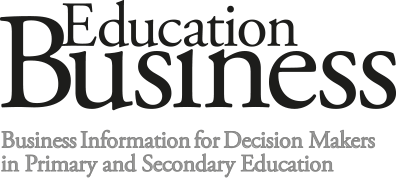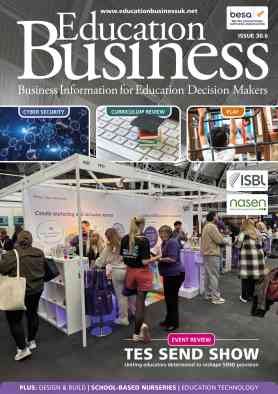
A community approach to improving digital skills
Orla Weaver, assistant head at The Grammar School at Leeds, demonstrates how their community based approach to digital skills for both students and staff has enabled them to successfully implement valuable tech resources that support effective teaching and learning.
The swift and sudden decision to adopt technology during the pandemic led to many schools, understandably, foregoing some of the initial steps and core principles that allow staff and students to use technology in an appropriate, efficient way.
At The Grammar School at Leeds, we were fortunate to have been well on the way to our own digital transformation before Covid-19, which had started with the roll out of 1:1 devices in 2018.
Our approach to helping our colleagues and students to develop their digital skills has evolved over time but the core principles have remained constant.
Having a shared vision
The success of any plan is about setting the right intention before taking any action.
Preparing colleagues so they have a shared understanding of what we are trying to achieve helps to save time and makes the implementation process smoother.
For us, this meant only investing in technology-based resources once we were clear on the benefits. Put simply, we did not want to disrupt the important work in the classroom to introduce a new tool or resource if we could not justify its pedagogical purpose.
It can be easy to be swept up in the excitement of what a new innovation can offer, tempted by the latest and greatest devices, or a snappy new EdTech resource and think that by virtue of its adoption, the quality of teaching and learning will instantly improve.
However, the ‘technology for technology’s sake’ approach risks not only wasting precious resources, but also jeopardising the goodwill of your school community by asking them to adopt a solution that complicates their lives.
Getting the right resources
Undoubtedly, technology can paradoxically make life more challenging but this can largely be avoided by ensuring you are providing your school community with the resources they need. This can seem daunting, but there are some guiding principles to simplify the process.
Firstly, it’s important to undertake a review of both hardware and software in use across the school, allowing you to understand what is being used and whether efficiencies can made. There are some solutions that can make this work less onerous for example by generating automated reports on the status of devices, identifying whether upgrades may be needed or where a resource reallocation could be beneficial.
Equally, it’s important to gather the opinions of the school community to understand their needs.
Reviewing your school’s devices and subscriptions will allow you to understand whether your requirements could be met in a more efficient way.
Finally, before investing in any new resource, it is important to understand what on-going support is provided. For instance, EdTech providers vary in the level of support they offer; for some, it may be a simple ‘FAQs’ section on their website, whereas others offer help sessions and webinars on a long term basis.
Carefully, considering what your school will need both in terms of the product and the ongoing support will help to ensure you choose the best solution for your school.
Empowering staff
Supporting and encouraging colleagues to gain new skills and increase their confidence when they are using technology is vital, not only in integrating any new digital resources, but also to ensure that that teaching and learning is not disrupted.
At The Grammar School at Leeds, we believe that effective training as well as infrastructure, are key parts of a digital strategy. Our approach ensures that colleagues have time to learn new skills and familiarise themselves with resources. We wanted to make ensure that our colleagues were being supported in terms of their professional development and were able to develop their capabilities in response to a rapidly changing educational landscape.
When introducing any new devices or EdTech solutions, we organised drop-in sessions focusing on hands-on, practical training. We held these at the outset so we could identify any issues and address them at an early stage. However, reinforcing this learning is just as important as providing initial training.
We continue to hold regular sessions to refresh colleagues’ skills; for instance, check-ins following the installation of new interactive screens to ensure staff were making the most of the functionality. Working alongside colleagues allows us to understand whether further support is needed and how to help people advance their skills.
Generating student buy-in
A truly successful approach to digital skills also means effectively engaging with students. One of the core principles to consider, is the pedagogical purpose and benefit of the resources being implemented.
Some teachers may be concerned about digital distractions. We have chosen solutions which allow teachers to control their students’ devices from one central console, with the ability to filter and block certain websites, monitor in-lesson device usage or even lock devices whilst instructions are being given, these measures have been useful in helping students keep focussed and on task. The key message we wanted to share with our students is that the devices fulfil a functional purpose - enhancing their learning.
We want to help our young people to develop the skills that will support their future studies and help prepare them for the world of work. Our aim is that by giving them a clear structure, students will develop good habits when using technology.
We also want to empower our students to take a curious and independent attitude to technology. We created a team of student digital leaders, who share insights and tips with their peers. This group is essential in spreading positive examples of how to use devices amongst the student body; and we also gain useful user feedback. We meet weekly to listen to their experiences with the technology which allows us to address any gaps in knowledge or skills.
Improving digital skills has a key role to play in enhancing the learning process, and arguably has never been more critical. But it is important to understand the current skills and competencies of students and colleagues and identify how different solutions can help to develop their digital skills to improve everyone’s learning. The integration of technology combined with skills development for all users will ensure that teaching and learning is more effective, as it will be a more collaborative and pedagogically driven process.
Latest News
09/01/2026 - 10:13
The measure, added to the Children’s Wellbeing and Schools Bill, delivers on the commitment made in the government’s manifesto to bring multi academy trusts into the inspection system.
08/01/2026 - 10:30
The government is launching a new app allowing students to view their GCSE results on their phones for the first time from this summer.
08/01/2026 - 09:45
Education Business LIVE has announced that Professor Samantha Twiselton OBE of Sheffield Hallam University will speak at the event in March 2026, delivering two thought-provoking sessions focused on initial teacher training and SEND provision.
07/01/2026 - 10:10
Solve for Tomorrow is a free, curriculum-linked programme which is mapped to Gatsby Benchmarks 4, 5, and 6, helping teachers embed careers education without adding to workload.
06/01/2026 - 10:24
London's universal free school meals programme has not led to improvements in pupil attainment during its first year, but has eased financial pressure and reduced stress for families.







